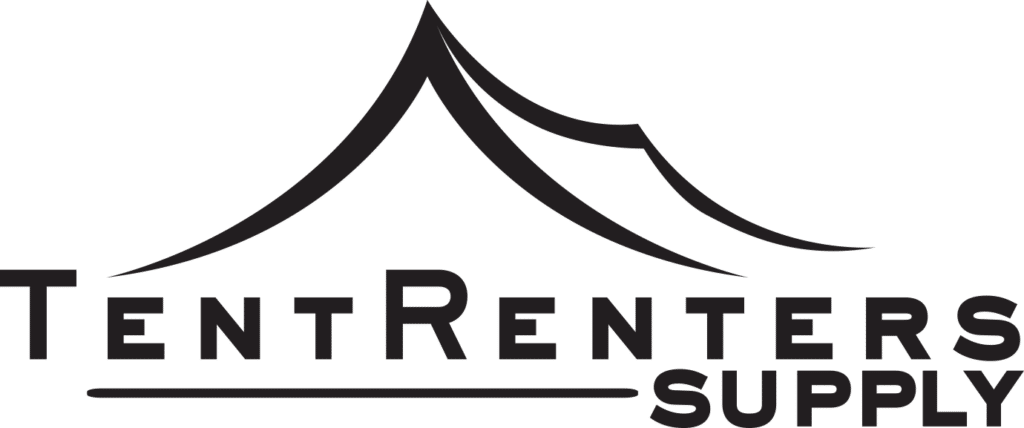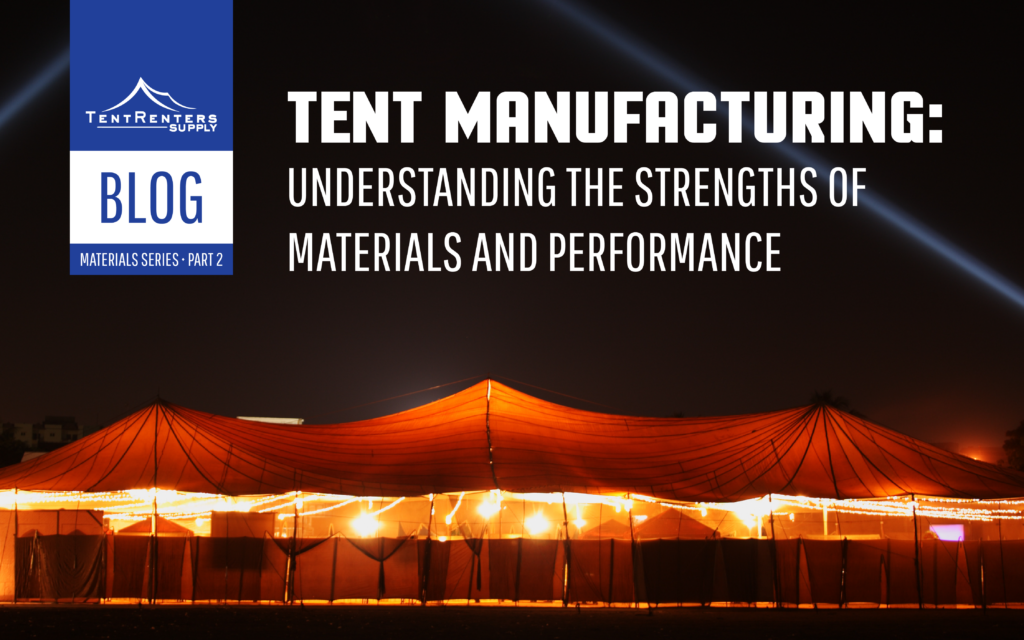Built to Last: A Comprehensive Guide to Tent Material and Performance, Event Tents, Events, tent material
Part 2: Tent Manufacturing: Understanding the Strengths of Materials and Performance
Welcome to Tent Renters Supply’s comprehensive series on tent manufacturing, where we delve into the strengths of materials and their impact on performance.
When it comes to tent manufacturing, selecting the right material for your application is crucial to ensure its durability and high-performance for years to come.
Much of that is determined by the materials used to construct any tent. Different materials offer varying strengths and performance characteristics that can greatly impact the tent’s quality, longevity, and performance.
In this article, we’ll explore the strengths of various materials commonly used in tent manufacturing and how they contribute to overall performance.
Scrim and Tent Strength
One often-overlooked aspect of tent materials is the scrim, which refers to the interwoven layers sandwiched between the layers of the tent fabric itself. Scrim plays a vital role in determining the strength and load-bearing capacity of the tent—though not all vinyl manufacturers create this during their process.
Choosing a material with a tightly woven scrim enhances durability and load-bearing capacity, ensuring the tent can withstand wind loads and other forces effectively.
For instance, in a tent that experiences a lot of tension, such as a high peak, it’s the scrim that controls how the tent stretches, in response to the anchor points.
Tension Loads of Tent Materials
Tension loads pose a significant challenge for tent materials, especially when exposed to external forces like wind or suspended equipment. The right choice of material is essential to ensure it can handle tension loads effectively.
At Tent Renters Supply, we go over the requirements of your tent needs to determine the best solution, and much of that starts with understanding the role of scrim. By considering factors such as intended use and load requirements, informed decisions can be made to select materials that offer optimal strength and performance.
UV Resistant Tent Materials
UV radiation from the sun can cause the degradation and weakening of tent materials over time. The industry measures UV resistance based on UV hours, with most materials providing protection for around 1600 hours.
Selecting the best vinyl for UV resistance depends on factors such as thread thickness, density, and anticipated UV exposure in different environmental conditions.
Our expertise in tent manufacturing allows us to guide you in choosing materials that offer superior UV resistance for prolonged durability.
Anti-Microbial Materials in Tent Manufacturing
Traditionally, tents have been manufactured with mold and mildew-resistant elements as a standard industry practice. But it doesn’t preclude tent owners from not cleaning, drying, and storing tents properly between use.
In particular, tents must be fully dried before being put away, including the webbing parts inside the tent which may still be wet. Storing even a partially wet tent can create an environment for bacteria, mold, and other conditions for biohazardous microorganisms to thrive.
For certain applications, such as the demand from healthcare organizations at the peak of COVID-19, maintaining hygiene and protection was essential. There are anti-microbial treatments for vinyl that offer significant advantages by inhibiting the growth of bacteria and other harmful microorganisms, and our team at Tent Renters Supply can guide you through the selection process.
An Expert in Tent Materials, Strengths, and Performance
Understanding the strengths of different materials and their performance characteristics is crucial in tent manufacturing. The scrim, tension load handling, UV resistance, and anti-microbial properties are all essential factors to consider.
With Tent Renters Supply as your trusted partner, you can enjoy reliable and long-lasting tenting experiences in various environments.
Contact us today to learn more about our expertise in tent materials and how we can assist you in choosing the best options for your specific tenting needs.

